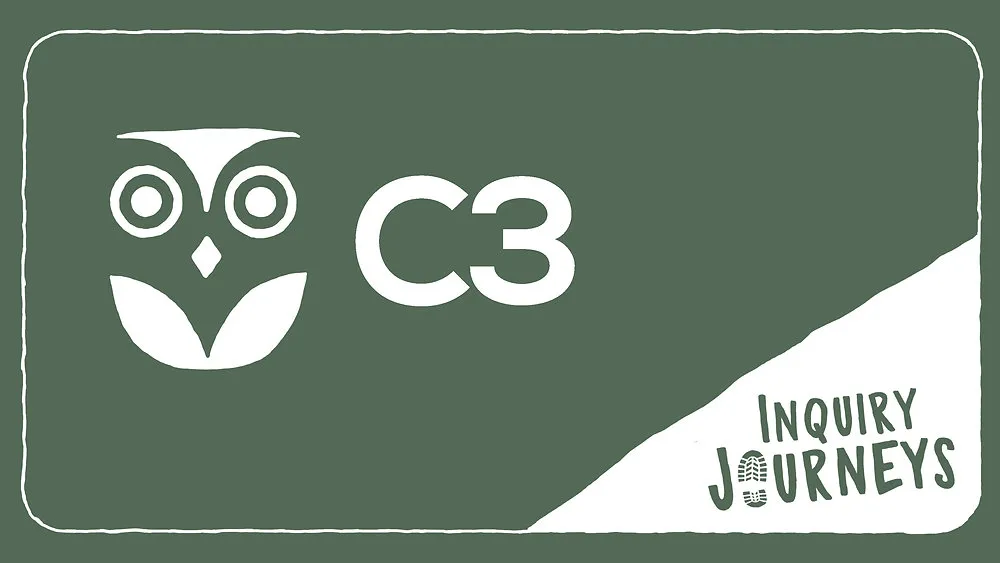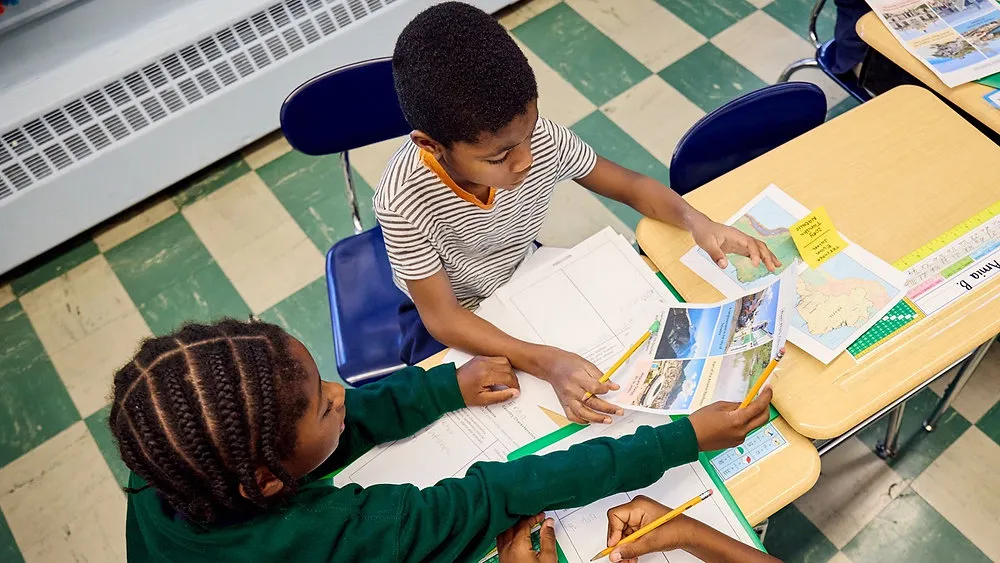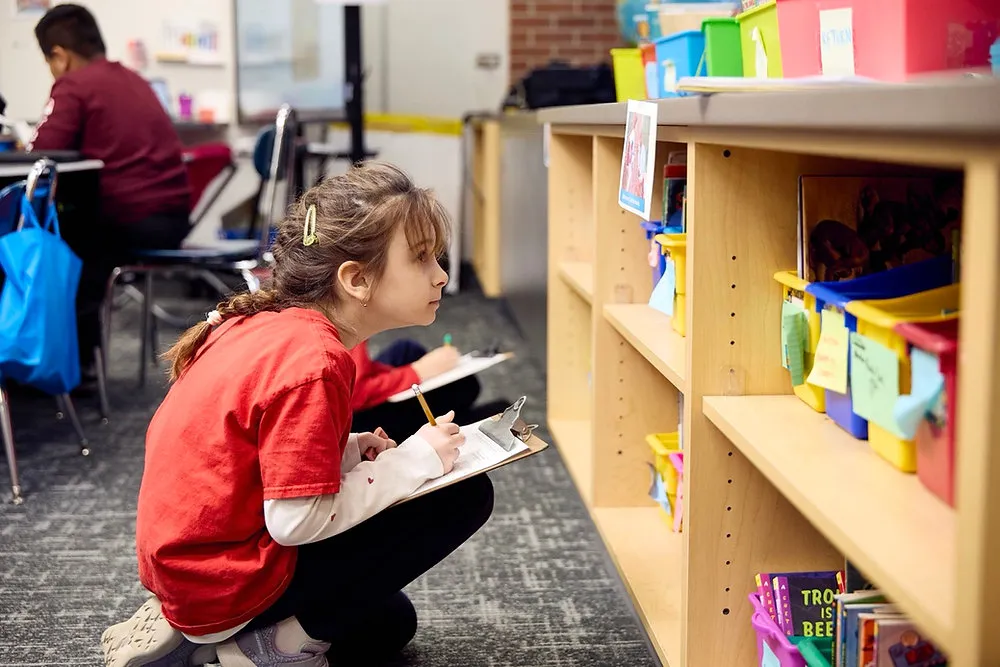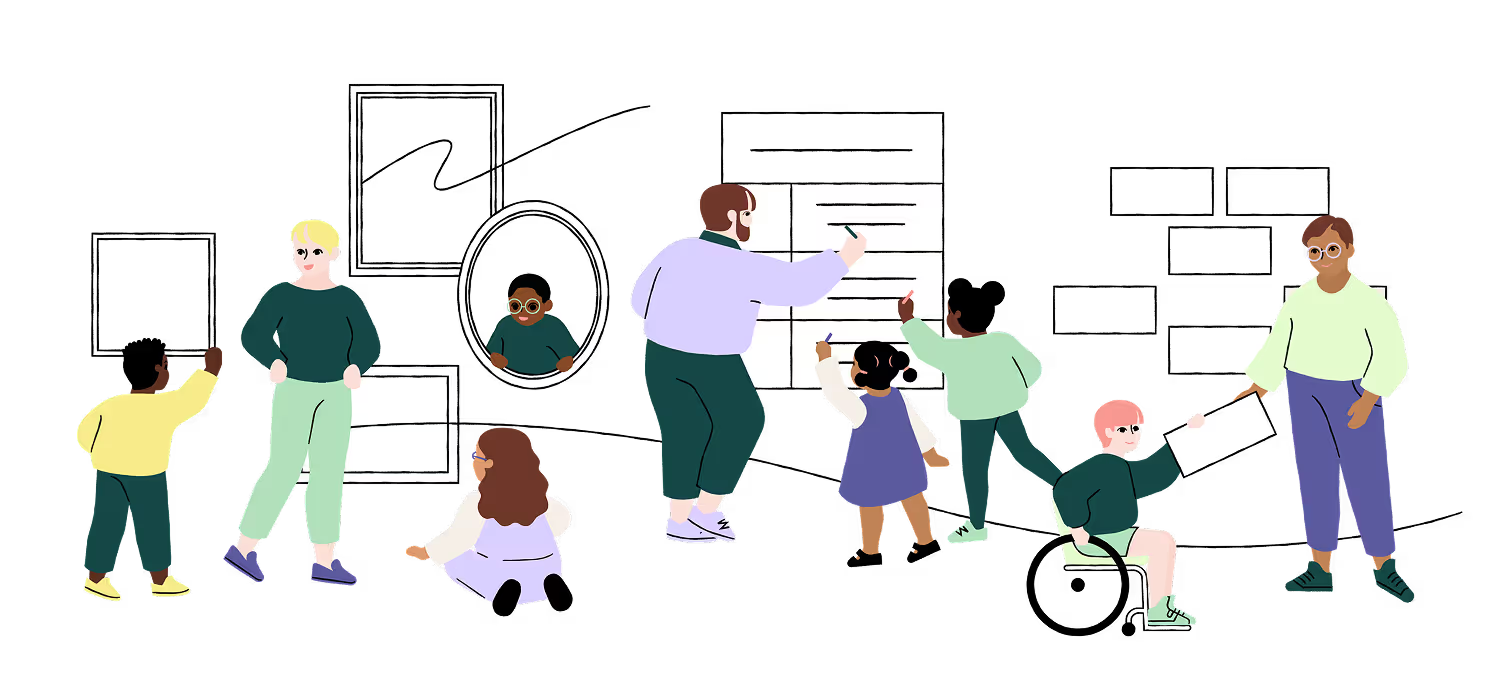What is inquiry-based social studies?
Inquiry-based social studies structures learning as an investigation driven by compelling questions. As students investigate, they analyze primary and secondary sources, build standards-aligned knowledge and skills, and apply their learning to real-world problems and opportunities.
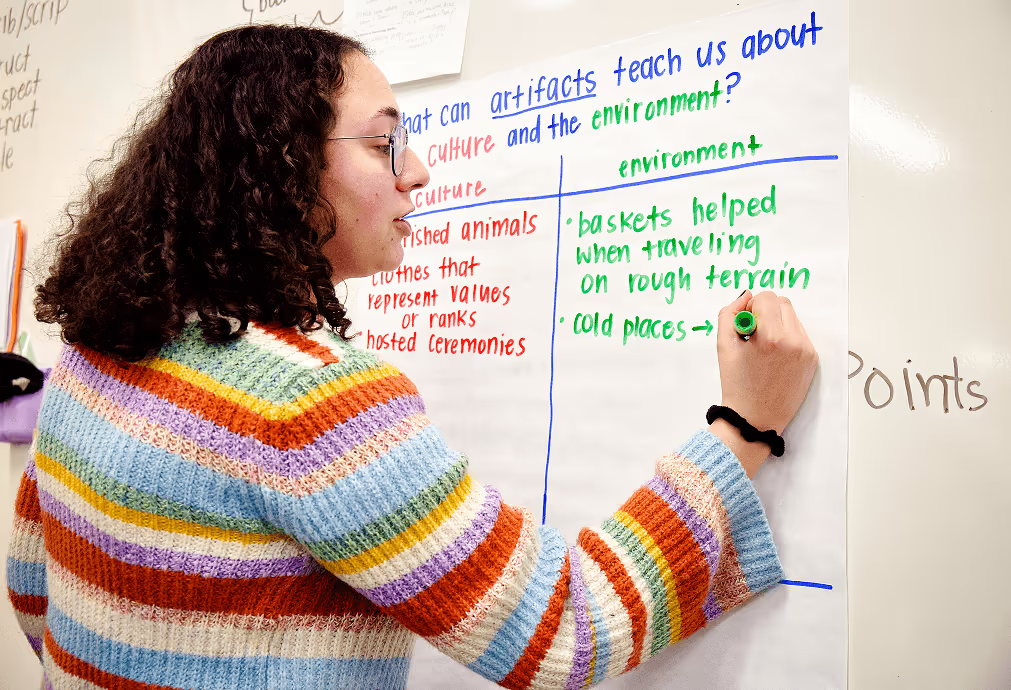
Looking for elementary social studies?
Inquiry Journeys, inquirED's elementary social studies curriculum provides inquiry-based instruction for young learners. Explore how students build knowledge and skills by asking questions, analyzing evidence, and connecting learning to their lives and communities.

Inquiry is a process...
Inquiry isn’t what happens after students build knowledge. It’s how they build it, make meaning of it, and transfer it to the real world.
In a 5th grade inquiry-based social studies classroom studying The American Revolution, learning doesn’t start with a lecture or a list of facts. It starts with a question like: How can we promote life, liberty, and the pursuit of happiness for all?
Students might begin by exploring what “revolutionary” means by examining images and ideas in a gallery walk. Then add their own questions, like "Who gets to decide what freedom means?" to an Inquiry Wall that grows alongside their understanding.
From there, instruction moves through a rigorous investigation of diverse primary and secondary sources. Students analyze artifact cards, debate the causes of revolution, and compare the strengths and weaknesses of colonial and British forces. As they read, discuss, and write, they’re not just memorizing events, they’re building the disciplinary knowledge and skills of historians, geographers, economists, and civic thinkers.
Finally, inquiry ends with real-world application. Drawing connections between the ideals of the Revolution and modern movements, students might design projects to share their learning with their community, like publishing a “Modern Revolutionaries” newspaper or creating exhibits that honor overlooked figures from history.
It’s a way to teach and learn deeply, meaningfully, and in ways that last.
question
Inquiry starts with a compelling question…
Questions are complex, connecting to students' prior knowledge and driving learning.
investigation
..moves through a rigorous investigation…
Inquiry isn't about filling in blanks on a worksheet. It requires research and critical thinking.
action
...and culminates in real-world application.
Students apply their learning, creating solutions that affect the world.

...leading to deeper learning outcomes
The goal of inquiry-based social studies isn’t the project or the poster. It’s what students can do with what they’ve learned. Structured inquiry helps students:
- Build foundational knowledge
- Deepen understanding through schema building
- Transfer learning to new contexts and real-world challenges
Inquiry is the process. Knowledge-building and transfer are the outcomes.
Identifying inquiry in social studies materials
How can you identify real inquiry in social studies instructional materials?
- A clear inquiry process (like launch, investigation, and action)
- Compelling questions tied to standards-based content
- Sequenced lessons with explicit instruction and guided practice
- Diverse primary and secondary sources, including complex texts
- Opportunities for schema building, application, and transfer
.avif)
What about implementing inquiry across a district?
High-quality instructional materials make the shift to inquiry-based social studies possible. They provide:
- A consistent structure for inquiry across classrooms
- Curated, diverse sources that build content and skills
- Scaffolds for disciplinary thinking, collaboration, and transfer
- A balance of explicit instruction and student-led learning to build background knowledge and deepen understanding
What does inquiry look like in the classroom?
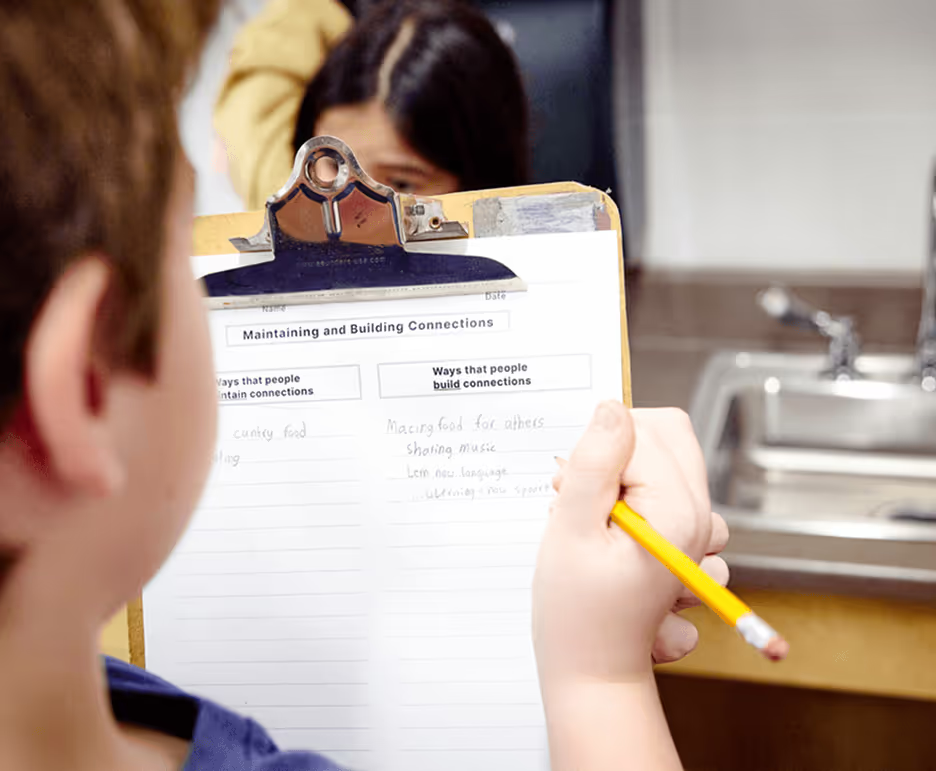
Anchor charts with compelling questions, vocabulary, and student thinking
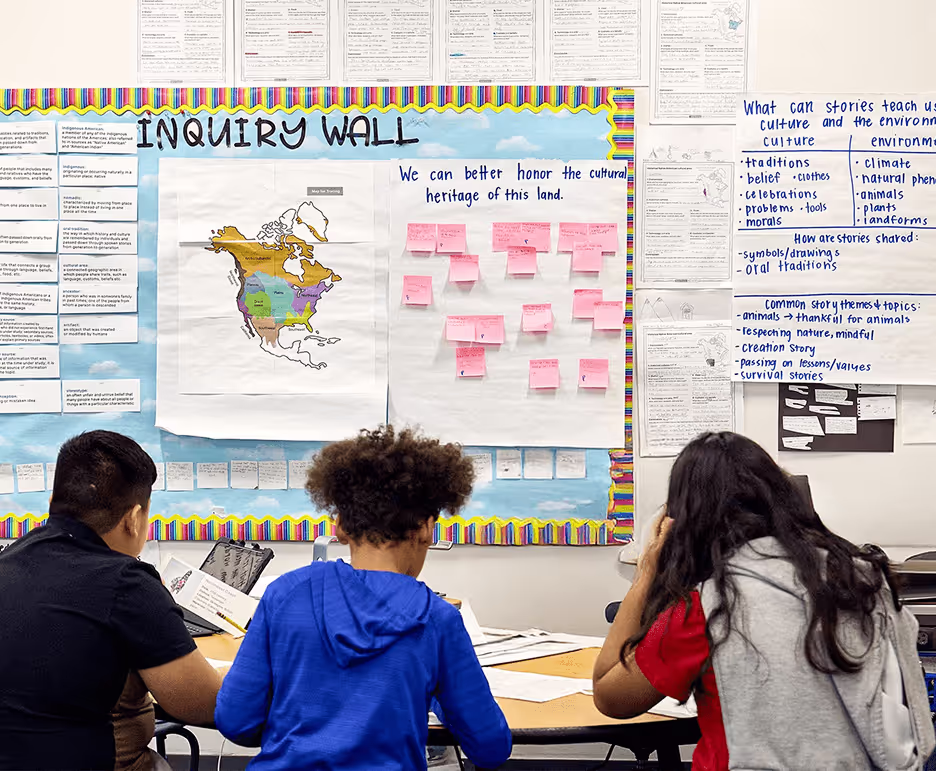
Small groups in a structured, collaborative discussion

A teacher modeling sourcing, analysis, and evidence-based writing
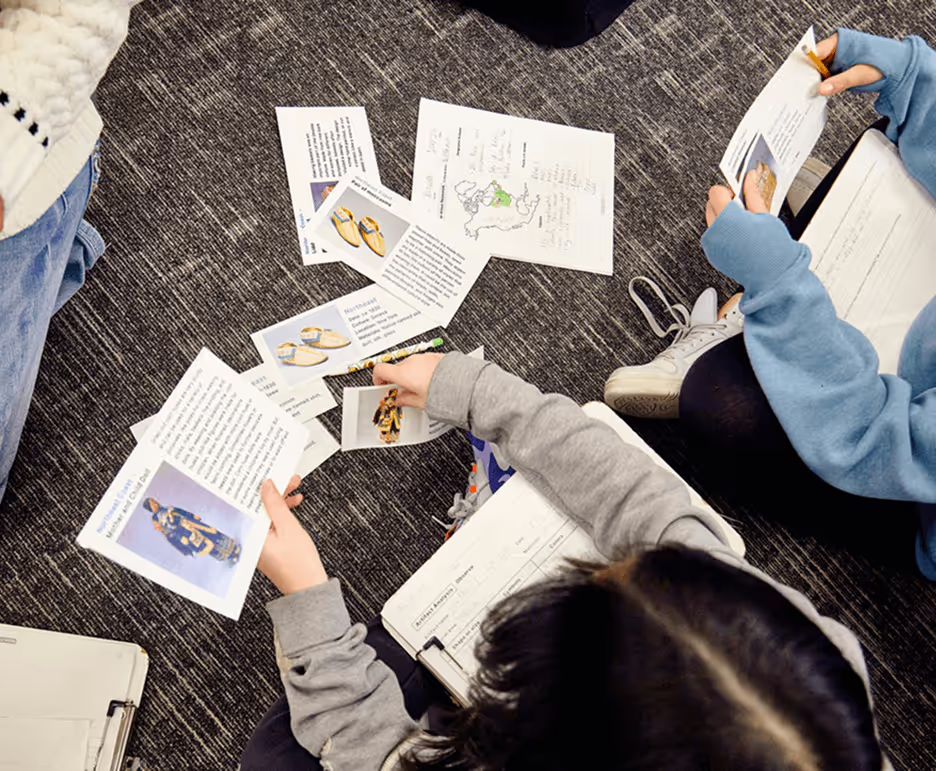
Students engaging with complex, content-rich texts
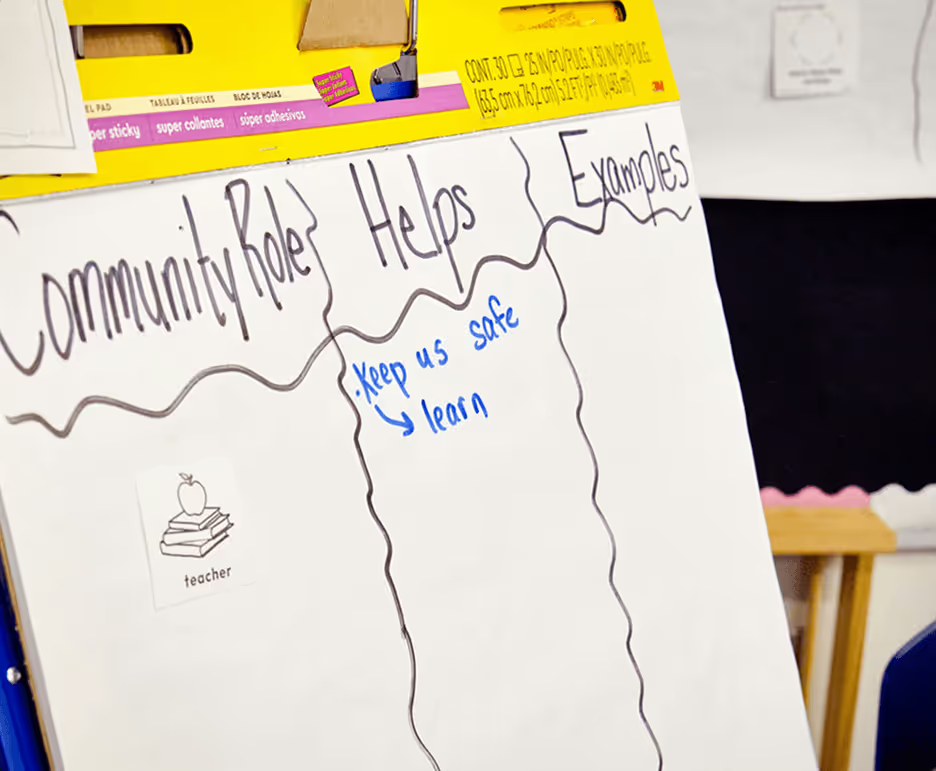
Graphic organizers, sentence frames, and annotations used as scaffolds to support learning and build independence

Shifting to inquiry-based social studies
Structured inquiry transforms how students learn—and how teachers teach. These shifts build deep knowledge, strengthen critical thinking, and prepare students to use their learning beyond the classroom.
From memorization to investigation
Inquiry-based social studies starts with a compelling question and builds toward application. Instead of memorizing facts in isolation, students build knowledge through active investigation, supported by intentional instruction.
What shifts for students:
- Recording facts → investigating compelling questions
- Memorizing → making meaning through investigation
- Passive learning → active knowledge building
What shifts for teachers:
- Delivering information → guiding inquiry with clear goals
- Teaching isolated facts → sequencing knowledge for depth
- Quiz prep → scaffolding lasting understanding
From single to varied sources
Inquiry-based classrooms use many different sources of information—texts, images, videos, and more—to deepen learning, build media literacy, and provide multiple perspectives.
What shifts for students:
- Investigating one source → analyzing multiple perspectives across different sources
- Consuming content → examining accuracy and gathering evidence
- Surface understanding → constructing evidence-based claims
What shifts for teachers:
- Assigning a single text → guiding exploration of a range of sources that support knowledge and skill development
- Delivering content → modeling how to analyze, compare, and source information
- Using texts as answers → using texts to model how to gather and evaluate evidence
From Recall to Transfer
In inquiry, learning doesn’t stop at what students can remember. It grows into what they can do with what they’ve learned. This shift turns content into something meaningful, lasting, and transferable across real-world contexts.
What shifts for students:
- Memorizing facts for a test → using knowledge to solve real problems
- Completing tasks for a single grade → creating products with real purpose and audience
- Moving on and forgetting → retaining and applying learning over time
What shifts for teachers:
- Assessing recall → evaluating how students apply knowledge in context
- Planning for coverage → designing for reflection, transfer, and deeper understanding
- Viewing the unit as an endpoint → seeing it as a foundation for future thinking and action
Frequently asked questions
Curious about how inquiry works in real classrooms? This section covers key questions from educators and leaders exploring structured, inquiry-based social studies.
What is inquiry-based social studies?
Inquiry-based social studies is a structured approach to learning that balances explicit instruction with student-led learning. Students ask questions, analyze diverse sources, and build evidence-based conclusions. It emphasizes deep knowledge-building, critical thinking, and civic engagement. It aligns with the C3 Framework and most state standards.
How does inquiry-based learning work in elementary social studies?
In elementary classrooms, inquiry begins with a big, compelling question. Students explore primary and secondary sources, discuss ideas, and apply disciplinary thinking to investigate topics in civics, geography, history, and economics. Teachers guide the process with structured lessons that balance explicit instruction and student-led learning.
What are the benefits of inquiry-based social studies?
Benefits include improved student engagement, stronger reading and writing skills, deeper content knowledge, and increased civic readiness. Students learn to think like historians, geographers, and informed citizens.
How does inquiry-based social studies align with state standards?
Inquiry-based instruction aligns with the vast majority of state standards through its integration of the C3 Framework and ELA standards. Structured inquiry supports students in meeting rigorous social studies content expectations, while also building essential literacy skills, including reading, writing, speaking, and listening.
What is the difference between inquiry-based and project-based learning in social studies?
Structured inquiry-based learning combines explicit instruction with student-led investigation. It focuses on the process of building knowledge through questions, sources, and analysis, not just "doing a project." Project-based learning can complement inquiry, but the two are not the same.
Can young students do inquiry-based social studies?
Yes. Young students are naturally curious, which makes them ideal inquiry learners. With the right supports, ike modeling, guided practice, and developmentally appropriate sources, even the youngest learners can ask questions, investigate topics, and share what they’ve learned. Structured inquiry helps build their knowledge, critical thinking, and communication skills from the very beginning.
How much time does it take to teach social studies through inquiry?
It depends on your schedule and instructional goals. Some schools use dedicated weekly blocks, while others integrate social studies into ELA time. High-quality curricula like Inquiry Journeys are designed to be flexible, whether you're teaching daily or weekly.
What curriculum supports inquiry-based social studies?
Inquiry Journeys is a comprehensive K–5 curriculum built for inquiry-based instruction. It includes standards-aligned units, high-quality sources, and teacher support, making it easy to implement inquiry at scale.


